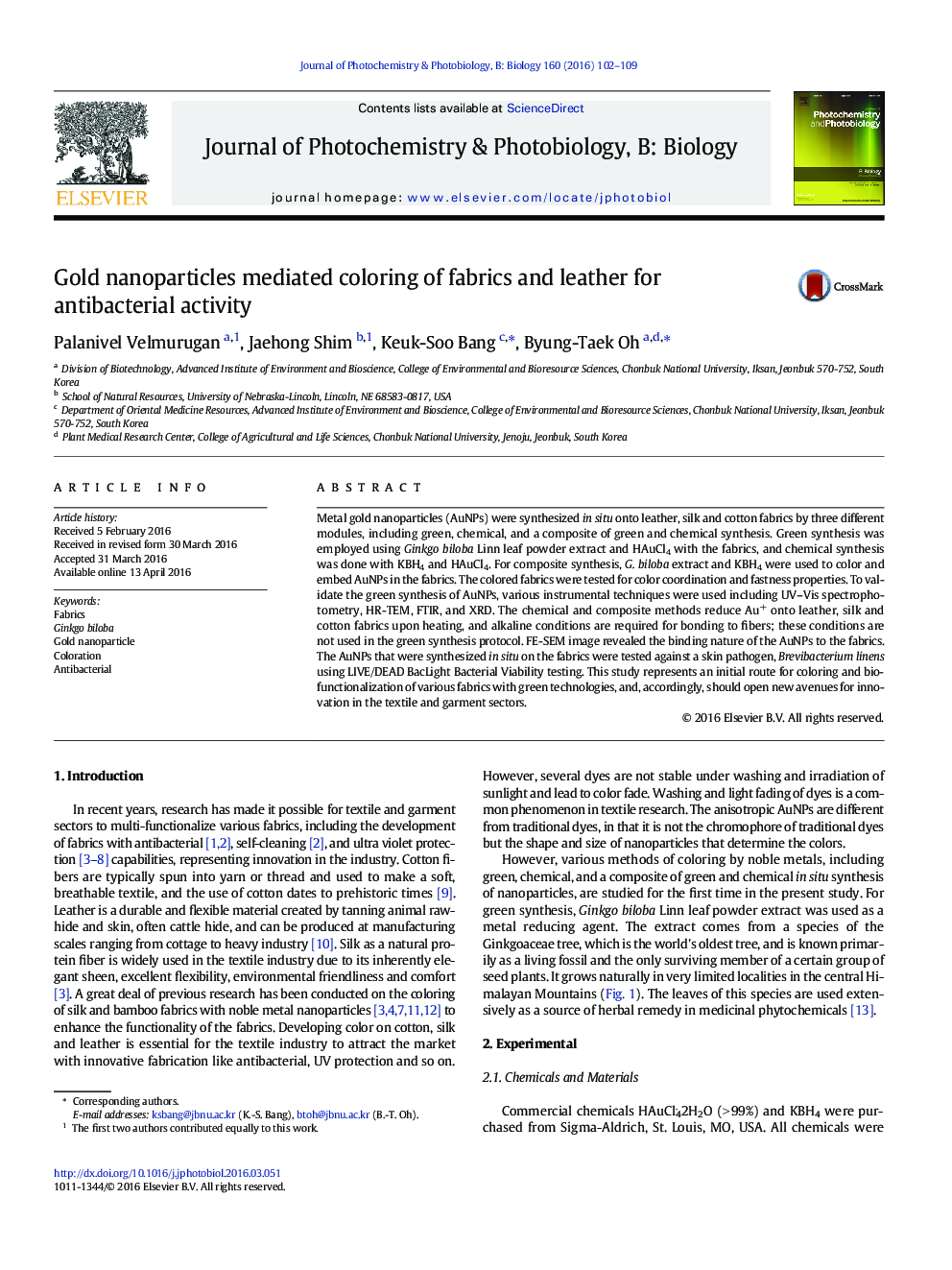| Article ID | Journal | Published Year | Pages | File Type |
|---|---|---|---|---|
| 29570 | Journal of Photochemistry and Photobiology B: Biology | 2016 | 8 Pages |
•Metal gold nanoparticles (Au NPs) were synthesized in situ onto leather, silk and cotton fabrics.•Different modules, including green, chemical, and a composite of green and chemical synthesis•Various instrumental techniques were used including UV–Vis spectrophotometry, HR-TEM, FTIR, and XRD.•The fabrics were tested against a skin pathogen, Brevibacterium linens using LIVE/DEAD BacLight Bacterial Viability testing.
Metal gold nanoparticles (AuNPs) were synthesized in situ onto leather, silk and cotton fabrics by three different modules, including green, chemical, and a composite of green and chemical synthesis. Green synthesis was employed using Ginkgo biloba Linn leaf powder extract and HAuCl4 with the fabrics, and chemical synthesis was done with KBH4 and HAuCl4. For composite synthesis, G. biloba extract and KBH4 were used to color and embed AuNPs in the fabrics. The colored fabrics were tested for color coordination and fastness properties. To validate the green synthesis of AuNPs, various instrumental techniques were used including UV–Vis spectrophotometry, HR-TEM, FTIR, and XRD. The chemical and composite methods reduce Au+ onto leather, silk and cotton fabrics upon heating, and alkaline conditions are required for bonding to fibers; these conditions are not used in the green synthesis protocol. FE-SEM image revealed the binding nature of the AuNPs to the fabrics. The AuNPs that were synthesized in situ on the fabrics were tested against a skin pathogen, Brevibacterium linens using LIVE/DEAD BacLight Bacterial Viability testing. This study represents an initial route for coloring and bio-functionalization of various fabrics with green technologies, and, accordingly, should open new avenues for innovation in the textile and garment sectors.
